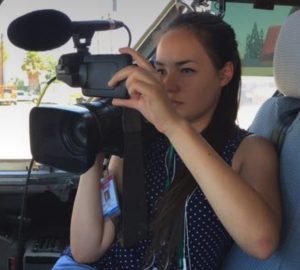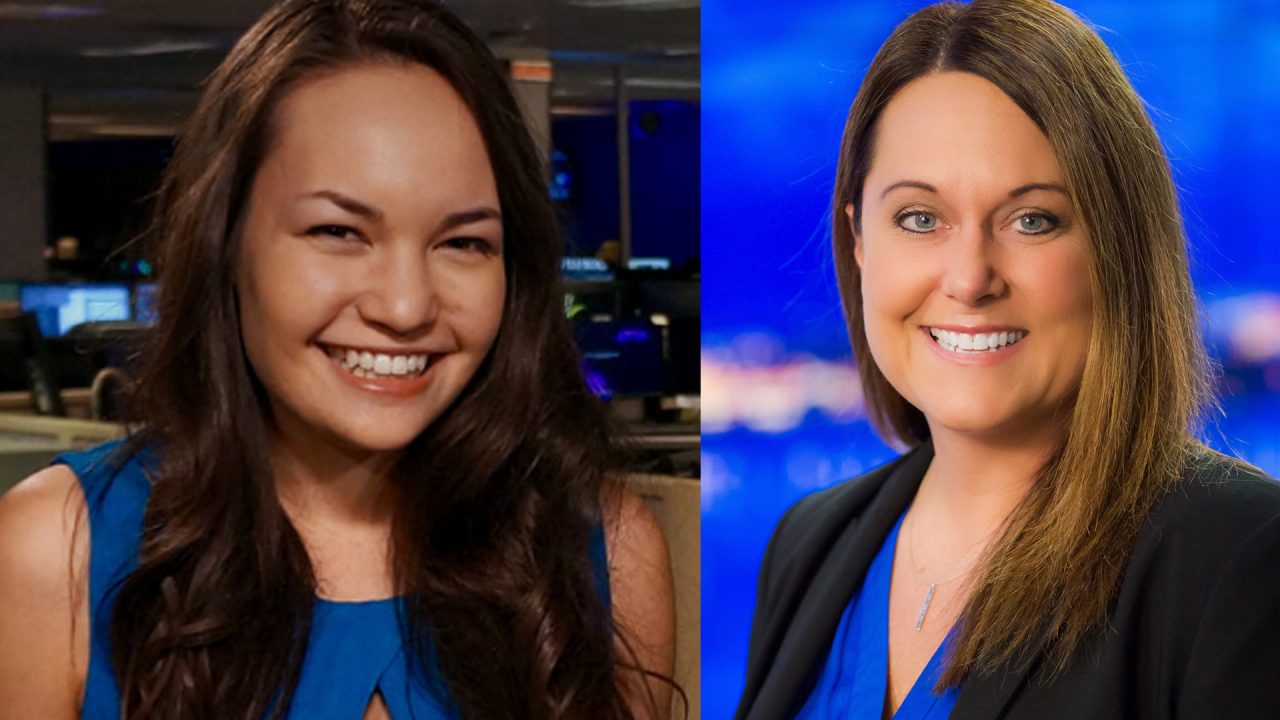Hiring is hard. It’s a combination of science and art, insight and instinct, experience and luck. Same with successful innovation. Every decision is a bet and a risk. As stations evolve to meet the needs of a new generation of consumers, how should recruitment change too? And how might up-and-coming young journalists challenge news directors to think differently?
This is the story of a professional “courtship” between two women who had plenty of reasons NOT to connect. And as veteran and budding journalists alike struggle to navigate a rapidly changing competitive landscape, it’s also a lesson for both stations and candidates in how to forge your own path.
Tracy Sabo is a news director who doesn’t like to hire MMJ’s straight out of school. She’s been burned too many times. “The struggle among news directors in the industry these days, especially when you work in small and medium markets, is the level of quality,” Sabo says. “Your management team has really got to spend a lot of time training — more than they’ve ever had to do before.” Sabo prefers someone with a couple years of work experience, even if it’s not always easy to lure them to KTUU in Anchorage Alaska, Gray’s station in market #147.
Samie Gebers (short for Samantha and pronounced “SAMMY”) is a self-described “California beach girl” who just graduated from our home base here at ASU’s Walter Cronkite School of Journalism. The only time she’s ever been to Alaska is on a summer cruise with her family. “People have actually told me, ‘There are two places in the United States that are career suicide: Alaska and Hawaii,’” she says. “‘You don’t want to go to those places. They’re too far removed. It’ll be hard for you to get back to the [contiguous] United States.’”

You can guess the punch line. Gebers and Sabo met in person for the first time when Gebers reported for work in Anchorage right after Memorial Day. Gebers, a prize-winning student journalist, turned down two jobs in her native California to go to Alaska. (Ironically, given the ‘career suicide’ advice, Gebers’ summer internship last year was at Hawaii News Now.)
Sabo told me she’s had Gebers in her sights for a year. “I’m super excited about her,” Sabo says. “I know it was a competitive effort to get her to see the value of Alaska, but she really got the eye of our chief photographer, because it’s rare that we see that level of exceptional talent coming out of school. Samie just absolutely impressed us as a storyteller. Her writing is well beyond her years, but mostly her eye for video and her ability to look for different angles and to recognize a moment definitely stood out, and that’s what we look for here in almost every hire we make.”
At Cronkite, Gebers pursued her passion for visual storytelling beyond the classroom and the newsroom. She wrangled scholarships to NPPA’s News Video Workshop in Norman, Oklahoma and later its Advanced Storytelling Workshop in San Marcos, Texas. The workshops were “huge game changers for me,” Gebers says. “So I started thinking about, what are stations that value the same things that the NPPA does, which is good storytelling…visuals…compelling characters and knowing the difference between a report and a story.”
Those workshops were game changers in more ways than one. Faculty member Ted Land of Seattle’s KING-TV, who once worked at KTUU, was impressed enough with Gebers to put her on Tracy Sabo’s radar.
But how did Sabo sell KTUU to Gebers? The station’s recognized legacy of outstanding photography and in-depth storytelling was a key factor, as well as a reputation for strong mentoring. New MMJ’s routinely start with weeks of one-on-one training with chief photographer Eric Sowl, a 28-year veteran of the station. “Tracy just seemed to really value the same things that I valued, which was strong storytelling and…having an environment where people can get better,” says Gebers.
And then there is — Alaska itself. It’s not every station that can include a shot of a polar bear in its recruitment video. Alaska’s vast scale — one-fifth the size of the continental U.S. — and its sometimes forbidding terrain make covering the entire state a challenge. “It’s not uncommon for our reporters to get on both commercial flights and bush planes, bush planes to snow machines, bush planes to boats; we’ve gone by dog sled in the Denali [National Park] in the winter before,” Sabo says. If that sounds like fun to you, you understand why Samie Gebers said yes.
Gebers admits she had to fight the temptation to shoot for the biggest market that would take her. If Sabo is right that there’s a shortage of great talent coming out of journalism schools, that (along with pressure on stations to cut costs) has opened up bigger-market opportunities for the strongest candidates. “Nowadays kids can go up to market 30, market 40, Market 50,” Gebers says. “But there are so many wonderful stations that are triple digit market numbers that are doing phenomenal work. And so it’s really important to just assess the station on its own and figure out if that’s going to be a right place for you.”
Gebers will start as an MMJ on the morning news, but (to her delight) there isn’t enough overnight crime in Anchorage to stir into the standard recipe of live shots from the scene, so she’ll be under pressure to come up with compelling original stories from the start. “We don’t want to be the station that spends our limited amount of resources covering every car accident or fire,” says her new boss. “We would rather tell a great human story.”
That emphasis on distinctive enterprise storytelling over routine ‘breaking news’ makes sense at KTUU because of Alaska’s unique attributes and the station’s history, but it represents a growing trend in the ‘lower 48’ as well. Sabo says she’s hearing something new from young journalists today. “I don’t get the same sense of ‘I want to be on TV and I want to be live and I want to tell people what’s breaking,’” she says. “Now what I find is they really want to be more involved in the community. They really are tied to the emotional side of news more than ever, and they’re not afraid to be human in the process, which is very much something that this older generation, me included, really shied away from. And so it’s changing the industry from where I sit, but I honestly think for the better. I think it’s more compelling to watch.”
Sabo says the rising crop of journalists like Samie Gebers has also given her a new perspective on her role. “My valiant effort as a news director isn’t to ‘save television’ or to ‘save television news,’ per se,” she says. “My goal is to be a great journalist and to reach as many people as possible. And I think millennials understand that. And so they come in thinking, ‘How do I reach people?’ Millennials have really challenged me as a news director. And I think they’ve challenged the norms. And I think they’ve challenged the legacy behaviors of broadcast news outlets. And I think that’s a good thing.”
You don’t always need a dog sled to leave your comfort zone.
We’re on the lookout for other examples of recruitments that reflect changing norms and challenge the conventional wisdom. If you know of one, please share it with us at cronkitenewslab@asu.edu.
